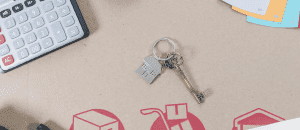Rent escrow reports have become an essential software for tenants who wish to protect their rights and ensure their hire payments are treated fairly. If you are working with unresolved maintenance issues or disputes together with your landlord, knowledge how to create a rent escrow bill can be quite a game-changer. Let us break up how to open an escrow account nowadays, things you need to understand, and how to get started.

What is a Lease Escrow Account?
A book escrow account is just a specific bank account where tenants can deposit their book payments rather than paying the landlord directly. That occurs when tenants believe the landlord has unsuccessful to keep the property or meet appropriate obligations. The money remains in escrow until the landlord treatments the problems or a judge chooses the case. This process guarantees tenants do not lose influence while also demonstrating great religion in fulfilling their book obligations.
Why are Rent Escrow Records Trending?
Recent rental market developments display a growth in tenant defenses and book escrow usage. Data from tenant advocacy organizations reveal a 30 % increase in book escrow cases over the past three years. That uptick is associated with heightened attention of tenant rights and increased confirming of habitability problems like plumbing problems, heating issues, and safety violations. For visitors, escrow records have evolved from a distinct segment appropriate instrument to a main-stream way to take care of disputes without endangering eviction or losing money.
Step 1: Understand Your Local Laws
Rent escrow principles range generally by state and city. Like, Florida and New York have particular tenant security regulations that make escrow accounts simpler to create, while other states do have more limited processes. Before proceeding, research your jurisdiction's requirements. You might need to notify your landlord in writing about the problems, give them a reasonable schedule to repair the problems, and record everything thoroughly.
Stage 2: Tell Your Landlord and Record the Issue
Before establishing an escrow account, it's essential to see your landlord in writing about the problems. That detect creates a paper path showing you have provided them an opportunity to make repairs. Get pictures, collect statements from repairs you have taken care of, and keep copies of all communication. Certification strengthens your situation if legitimate activity becomes necessary.
Step 3: Open the Lease Escrow Account
When you are prepared, you can start an escrow consideration, frequently at a nearby bank or credit union. Some courts also hold escrow accounts in landlord-tenant cases. The tenant deposits book funds in to this bill rather than paying the landlord directly. In some areas, a court purchase is necessary before creating the consideration, so check always your neighborhood techniques carefully.
Stage 4: Maintain Documents and Keep Agreeable
Keep an eye on every cost you make to the escrow consideration and keep on fulfilling different lease obligations, such as for example tools or upkeep in your end. Stay static in interaction with your landlord and the local housing company, if applicable. Escrow accounts are made to be short-term alternatives, so make an effort to handle the difficulties quickly and amicably.
What Occurs Next?

Following rent is transferred in escrow, landlords normally have a collection timeframe to handle the problems. When they comply, the book is released to them. If not, tenants might be able to use the escrowed resources to protect repairs or pursue legal remedies. Courts often monitor this technique, ensuring equity and avoiding abuse.
The Greater Image
In the present rental market, book escrow records provide a clever, data-driven strategy to safeguard tenants economically and legally. With growing claims about property maintenance and an emphasis on tenant rights, this tool is now very popular nationwide. If you face a rental dispute, understanding lease escrow records may assist you to safeguard your investment and force for an improved living environment.
